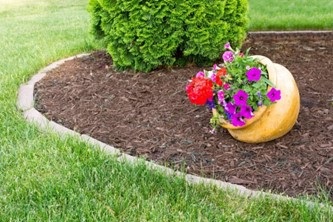What is mulch?
Mulching materials can either be organic or inorganic. Common organic mulches include wood chips, shredded bark, pine needles, shredded leaves, and straw.
Applying a layer of mulch is one of the best things you can do for your trees and bedding plants. In addition to adding color and texture to a landscape, retaining moisture, suppressing weeds, and acting as an insulator, organic mulches have many natural benefits:
-
Helps prevent soil compaction.
-
Acts as a soil conditioner.
-
Encourages the presence of natural aerators, like earthworms.
-
Adds nutrients including potassium, nitrogen, phosphorus, and trace elements to the soil.
How do I use mulch at home?
Mulch should be applied to a depth of around 10 cm. This provides an effective weed suppressing layer and maximizes moisture retention.
Types of mulch
Spoiled Hay
For the back garden and the vegetable garden, some of the best mulch is spoiled hay. Spread it 20-25 cm. Add more (up to 30cm) if weeds start growing. Be sure to pull any weeds out as soon as possible as they’ll keep growing and can inhibit growth of your plants and vegetables.
Sawdust
Sawdust can be used as mulch and there is no need to mix it with anything. It is best to make sure it’s aged a little before putting it around plants as fresh sawdust can be too strong for your plants.
Pine Needles
Pine needles are naturally acidic in nature. As they decompose, which is a slow process, additional acid is added to the soil.
However, this may not necessarily be a dramatic increase. Since pine needles are acidic, it goes without saying that acid-loving plants (like azaleas, rhododendrons, hydrangeas, blueberries, etc.) will thrive with this type of mulch. Other plants may not respond as well; therefore, pine mulch may not be suitable.
What is the difference between mulch and compost?
Mulch can be organic or inorganic and does not necessarily decompose to add nutrients to the soil. Mulch Should be applied to the top layer of soil to help control weeds, retain moisture, and regulate temperature.
Compost is entirely organic and rich in nutrients, improving soil health as it breaks down. Compost should be applied beneath the top layer of soil to benefit the soil by providing essential nutrients. Composting accelerates the decomposition process by creating an ideal environment for bacteria, fungi, and other decomposing organisms to do what they do, which in this case is act as a catalyst.
For more information please contact Council’s Environmental Projects Officer - Education on 5481 2200.